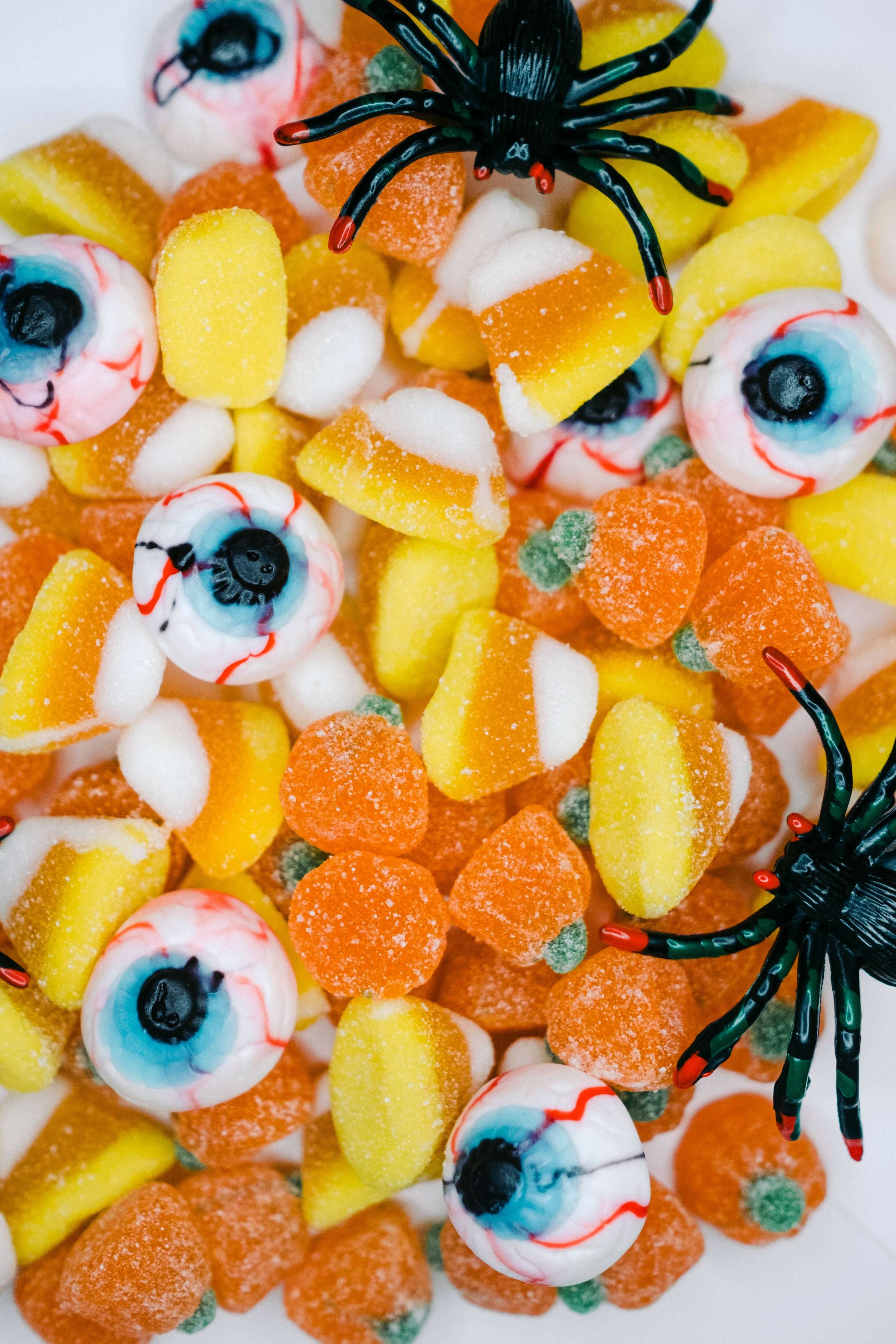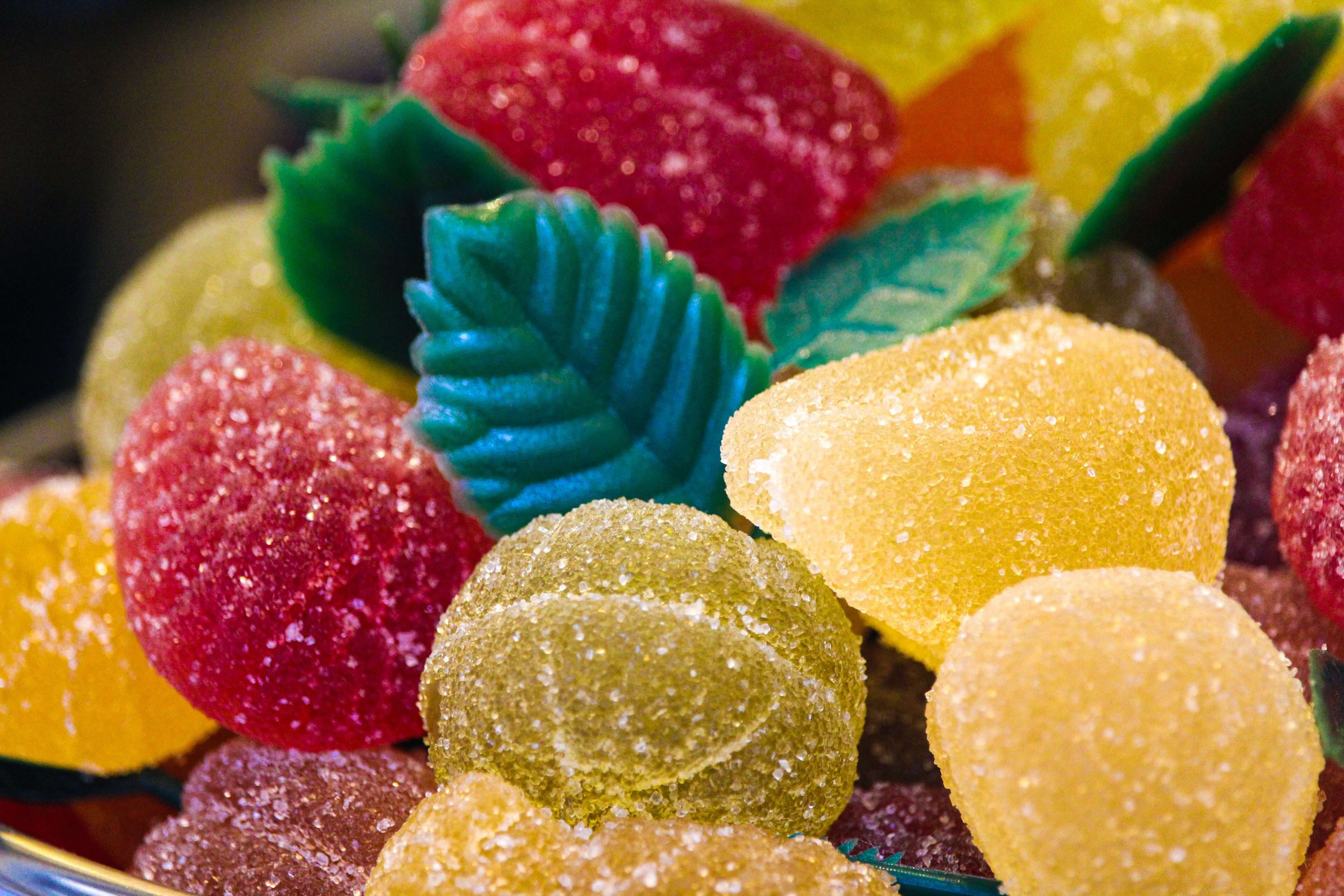Should you be afraid of Red 40 in your kid’s Halloween Candy?
As a parent, you want your kid to enjoy Halloween, and the pleasure and joy that comes with it. But recently, all you can think about is how candy might negatively affect your child.
You may be concerned about the sugar content, and then more recently, you’ve heard about red dye 40. With all the discussions around the harms of Red 40 in kids, it’s understandable to feel cautious when it comes to your child’s nutrition and health. You want your child to have a great Halloween experience, but always feel fearful of the contents of candy, such as red dye 40. And, as a result you’ve found yourself questioning, should you allow your child to have candy with Red dye 40 in it? There’s a lot of questions surrounding this common dye used in foods and as dietitians, and it’s hard to know the answers because of the impact of diet and wellness culture. Good news is, we’ve got answers for you!
What is red dye 40?
Red 40 is a synthetic food dye used in foods to achieve a reddish color. It’s added to many foods and beverages, including cereals, candy, dairy, sports and energy drinks, baked goods, easter eggs, and more. The dye belongs to a group of chemicals known as “artificial food dyes”, which are used to alter the colors and appearance of food to make them more appealing. Red 40 has been approved as safe for consumption by the Food and Drug Administration (FDA) since 1971, but there are some rising concerns about the dye’s safety for kids.
What are potential concerns with Red 40?
1.Concern that Red 40 causes and/or worsens hyperactivity in children.
Many parents have raised concern that artificial food dyes like Red 40 cause hyperactivity in children. There is no evidence that shows that Red No. 40 causes ADHD, but despite this, and largely due to social media misinformation and disinformation, it’s become popular to demonize artificial dyes as the culprit of neurodivergent behavior.
The truth is that there are many, many reasons why children might be more hyperactive, and blaming hyperactivity on one singular thing invalidates neurodivergent experiences and is abilist. As a parent, it can be very stressful and concerning to see your child suffering with ADHD and we want to encourage you to be very cautious about blaming neurodivergence on food dye. Doing this reinforces the idea that neurodivergent behaviors are something that needs to be “fixed”, and it dismisses the emotions that children experience in their childhood. Tantrums, excitement, and restlessness are normal childhood behaviors, and for children with ADHD, these behaviors are traits that are part of who they are.
It’s also important to note that scientists have been studying artificial food colorings since 1973 when a pediatrician named Dr. Benjamin Feingold first proposed a link between food dyes and hyperactivity in kids. His research wasn’t accepted by medical community because it was anecdotal, but it did start years of research on food dyes.
2. Concern that Red DYe 40 is banned in Europe but allowed in the U.S.
There is concern that the U.S. is allowing continued use of food additives such as Red 40 while Europe has banned it. This often supports a narrative that Europe sees the “danger” of this dye and the US chooses not to. What some don’t realize, is that there are many food additives that change name in European products. In this case, Red 40 is used as an “E number” in Europe and so when looking for it on packaging, it will look different. Red dye is not banned in Europe, it just has a different name. Interestingly, more artificial colors have been approved in the EU in comparison to the US. There are 15 colors that have been approved for use in the EU that haven’t been approved in the US. And, there are 5 colors that have been approved in the US and are not approved in the EU. Just because an ingredient is banned in another country, it tells you nothing about its safety.
3. Concern that Red 40 contains harmful chemicals.
There are also concerns that Red dye 40 contains chemicals that could cause harm to your children. Red 40 does contain benzene, which has been labeled as carcinogenic. However, benzene is also found in many, many other things, including butter, eggs, citrus-based drinks, fruits, meat, jams, jellies, etc. It’s impossible to fully eradicate these chemicals from our foods and chemicals are not inherently bad.
What are the truths about Red 40 dye and how do you make decisions about candy for your kids?
It’s important to take into account the evidence that supports that Red 40 has not been shown to cause ADHD or other harmful things in kids, and that it’s safe to consume. Foodinsight sums this up by stating that “continuing to perpetuate the misinformation that Red 40 causes ADHD is not helpful for anyone. Unnecessarily restricting diets of children or falsely thinking you caused your child’s or your own ADHD can be incredibly harmful.”
In addition to this, denying your child access to candy will intensify their cravings and they’ll seek it out in other places. They might eat more of it at a friend’s house, eat much more than they want, or may even binge on the candy. Allowing your child to have candy that has Red dye 40 this Halloween season is okay, and it doesn’t mean you’re a bad parent.
Lastly, it’s important to note that we support you as a parent to make decisions about what foods you bring into the house for your children, and also acknowledge that this is not always a choice that everyone has to make. As dietitians who specialize in working with parents who have concern about their kids feeding and eating behaviors, we know just how many decisions you have to make about your kids wellbeing and how exhausting this is. We are also thoughtful about the intensity of the discourse around artificial food dyes. We provide this information about red dye 40 so that you are armed with a range of information and can make choices, when possible, about what foods you bring into your home.
You’ll also love…
How To Distinguish Between Normal Teenage Behavior and an Eating Disorder
The New Obesity Guidelines For Kids Are Horrifying Registered Dietitian Says
What Is Orthorexia Nervosa? When Eating Healthy Becomes Unhealthy
Are you feeling overwhelmed by all the information out there about what to feed your child? Are you noticing feeling increasingly afraid of food dyes, additives or food in general?
Our Seattle-based virtual eating disorder dietitians are trained to help you and your child navigate the complicated nature of eating, and help you to make food choices that are rooted in your values and the wellbeing of your kids and family. At Bravespace Nutrition, our dietitians can support you if you’re concerned about your teens eating habits or body. WE help you and your family to stress less about food! For more information on our services, schedule a free 15-minute discovery call today! We are happy to answer questions and support you!



